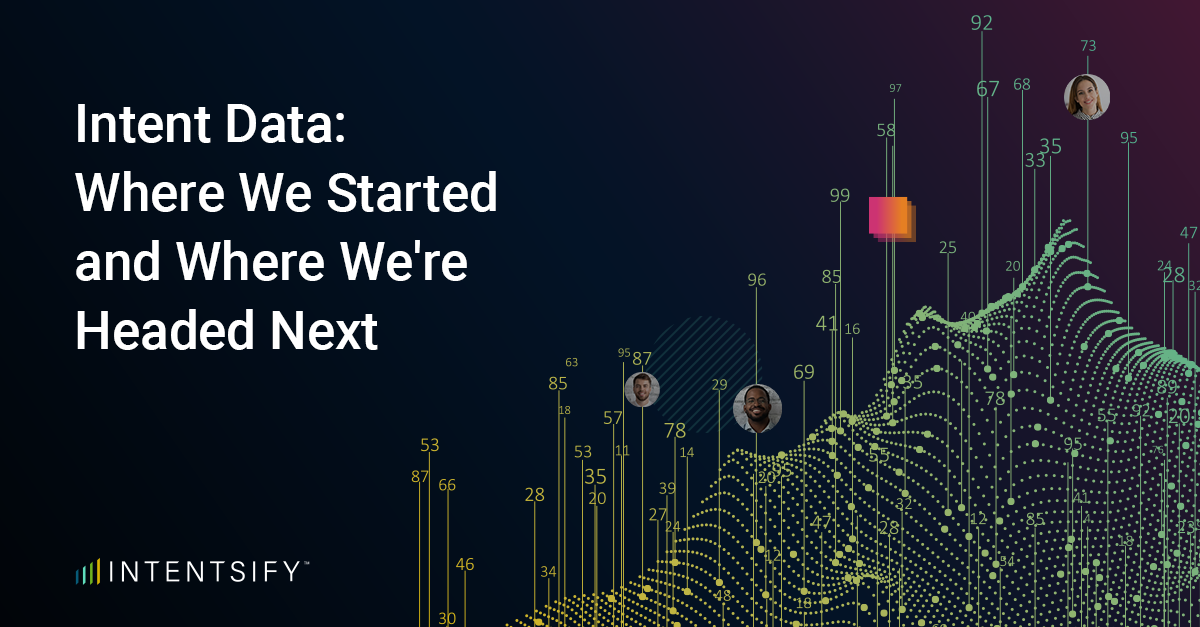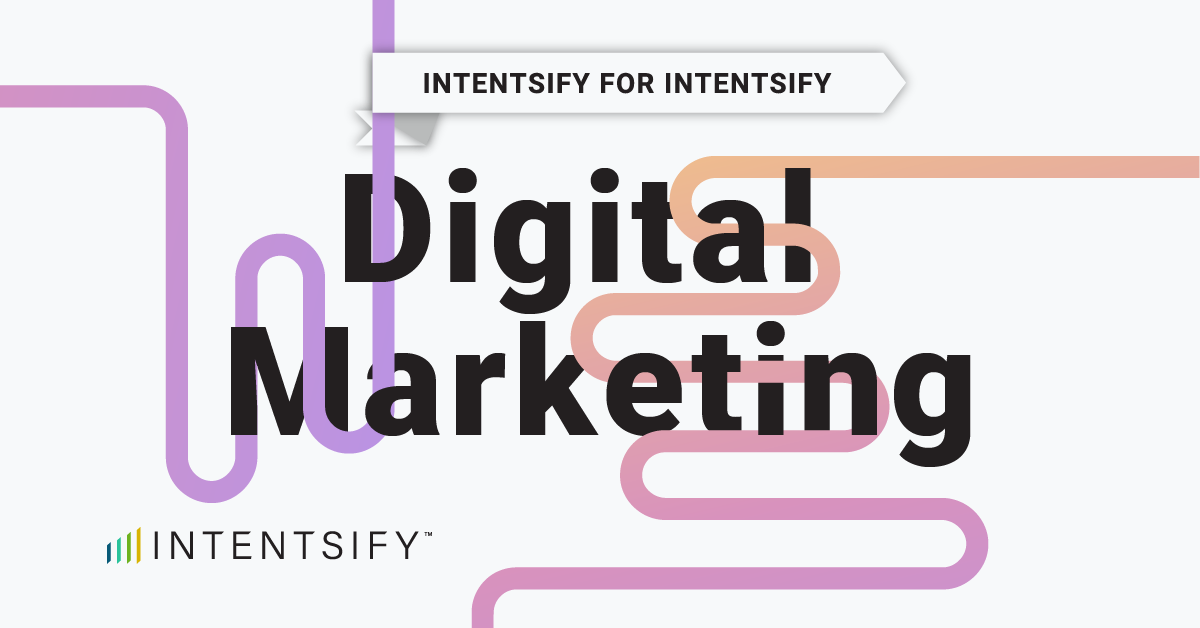A version of this article was originally published on CMSWire in April 2022
and has since been updated in October 2022.
“Intent data is like ABM now — if you ask 30 different people what it is, you’ll get 35 different answers. Here’s what you really need to know.”
During a recent conversation, tech-industry CMO and thought leader Scott Vaughan said something that struck a chord: “Intent data is like ABM now—if you ask 30 different people what it is, you’ll get 35 different answers.”
Now, this can be said about many things in the B2B tech industry; we’re not exactly diligent about defining our terms. And to be fair, B2B tech is always evolving.
Yet, more and more data providers seem to be significantly, and inadvertently, expanding the scope of what’s considered intent data. From types of data sources to derivation methods, and capabilities to specific benefits, the intent data category has become a broad one.
All Intent Data Types Provide Value
To be clear, I believe all intent data types—rightly or wrongly labelled—provide value, especially when efficiently layered and synthesized into a more holistic, accurate view of your market. The more sources and types of intent data you put to work (in aggregate), the more benefits and value you’ll get from your intent data investments.
But is it all really “intent data”? Or are data providers just opportunistically riding the intent trend wave? Most importantly, does it even matter?
My opinion: Yes, it’s all intent, but not all intent data feeds are created equal; and many intent data and solutions do so much more than just identify an “intent to buy.”
And yes, it matters. By confining our understanding of “intent data” strictly to information that highlights a prospective account’s intention to purchase, we’re limiting intent data’s potential value. This is bad for users and providers.
A Wide Range of Intent Data Definitions
A quick search for intent data definitions reveals the breadth of meanings. Here are just a few definitions from prominent brands (I kept anonymous as to not denigrate any of them).
“Intent data predicts purchase intent by analyzing a prospect’s behavior across the web.”
“Intent data is a dataset that shows what an individual is interested in and, therefore, what they are likely to do, say or buy next.”
“Intent data is information collected about a web user’s observed behavior—specifically web content consumption—that provides insights into their interests.”
As you can see, they range from defining intent data as a tool that specifically “predicts” a prospect’s purchase intentions to a more holistic dataset that provides an understanding of overarching interests.
The latter implies more intelligence than just buying intent. And whichever definition you ascribe to dictates how you’ll use intent data solutions and the amount of value you can generate from them.
How Intent Data’s Definitions Affect Users (and Data Providers)
Pigeon-holing various types of data into one, highly specific definition limits how users understand and leverage it. (In turn, this can inadvertently stunt intent data providers’ opportunities for business growth.)
Let’s look at a few real-world examples. If we take intent data’s most specific definition (i.e., data that predicts a prospect’s intent to purchase a product or service), use cases are limited to account identification/prioritization for marketing and sales efforts, allowing them to allocate resources more effectively. While these use cases are undeniably powerful, they represent only a small part of what go-to-market teams can do with most types of intent data.
If we ascribe to intent’s broader definition (i.e., intelligence regarding businesses’ online-research activities and interests), we open the door to far more use cases. For example, beyond simply identifying which accounts to target for marketing and sales efforts, we can use the information to better:
- Identify buying stages: Locate where prospects are in their buyer’s journey, helping GTM teams select engagement channels and tactics.
- Surface buyer needs and priorities: Understand what prospects care about, helping you select the right messages, talk tracks, and content to use with them.
- Outmaneuver the competition: Be aware of when particular customers are researching competitors, so customer success teams can mitigate issues before customers churn.
And the above are just a few sales and marketing use cases. Used effectively, certain types of intent data provide data science, digital experience, and business strategy teams with more expansive, strategic intelligence. Specifically, intent data can inform both GTM and business-wide strategies by enabling these teams to:
- Identify shifts and opportunities in your target market.
- Map and continually update the typical buyer’s journey.
- Understand competitor strategies and business moves.
- Identify acquisition targets.
All the above capabilities imply that “intent data” has evolved beyond its initial scope—and category name. So, what are the wider implications?
Intent’s Evolution Points to the Rise of Business Intelligence
Automation of simpler tasks—and to some degree more complicated processes—defined the early 2010s as marketing automation platforms became table stakes for B2B organizations. In other words, strategy execution was the focus.
Over the past few years, however, data has come to the forefront. Firmographic data, technographic data, propensity data, and more recently—and importantly—intent data, have been rapidly ascending in importance, largely in the context of account-based go-to-market initiatives. The pendulum seems to have swung from execution back toward strategy development—largely based on the powerful market, account, and buyer intelligence driven by the proliferation of intent data solutions.
This intent data-driven evolution of GTM strategies has important implications for B2B businesses. Data aggregation, synthesis, portability, and activation are becoming central to the success of B2B strategy development.
In turn, strategies are becoming far more dynamic based on the always-on, ever-evolving intelligence that fuels them. This, of course, means that executing these strategies is becoming immensely difficult. The B2B tech pendulum may soon swing back toward execution tools. Or, better yet, the market may be heading toward solutions that allow dynamic-intelligence strategies and execution processes to evolve in unison.






